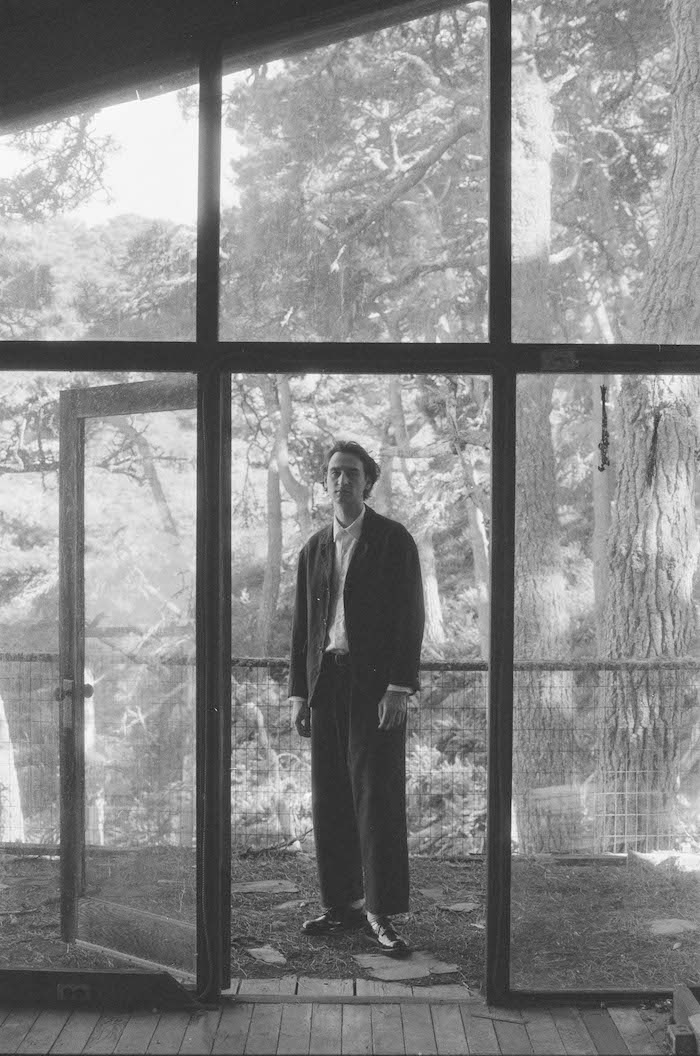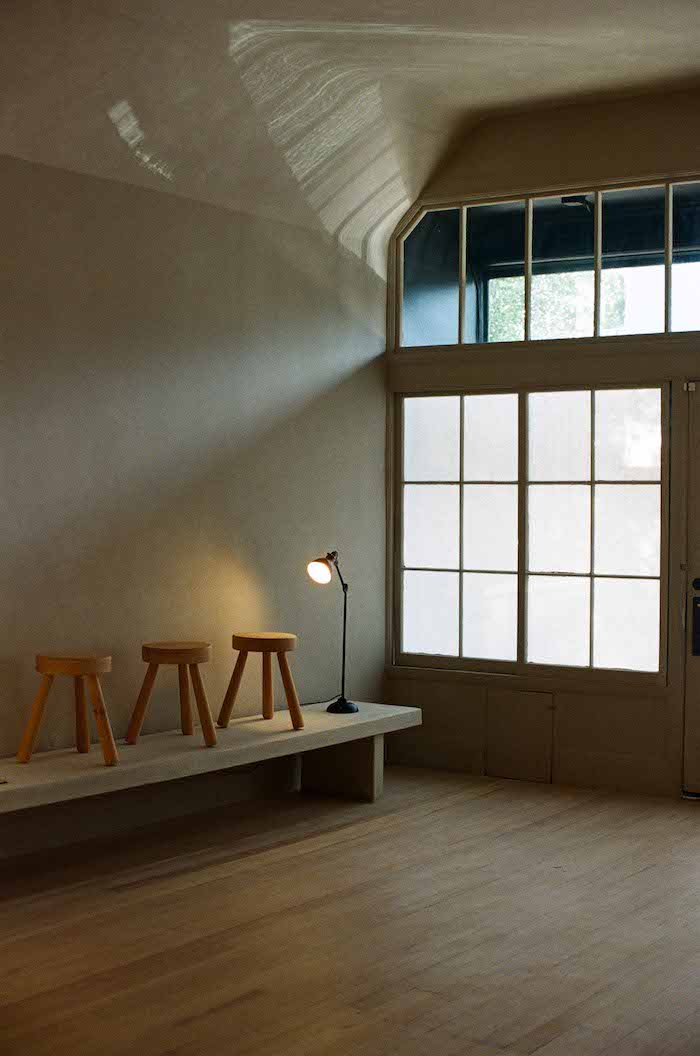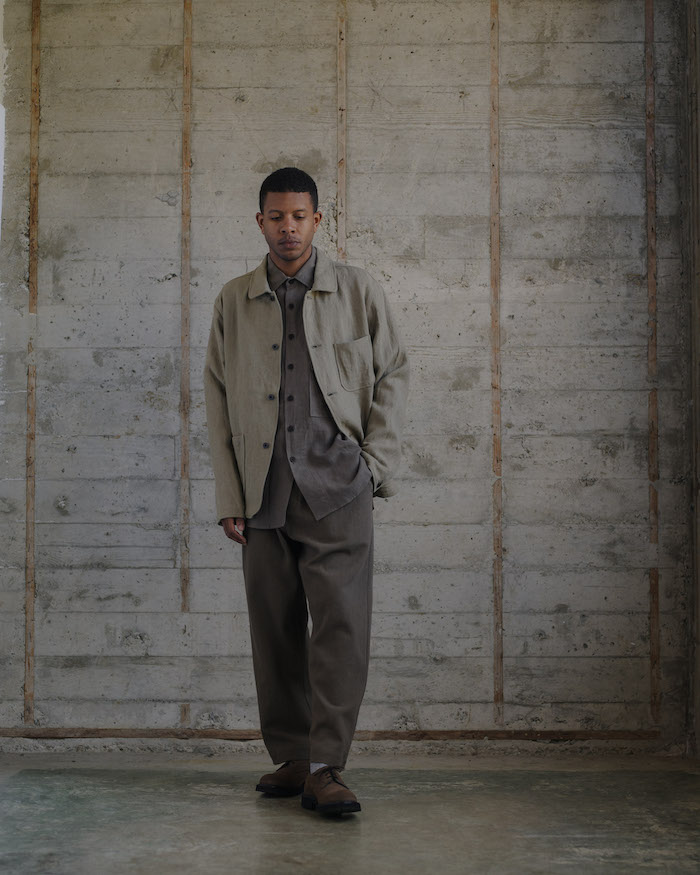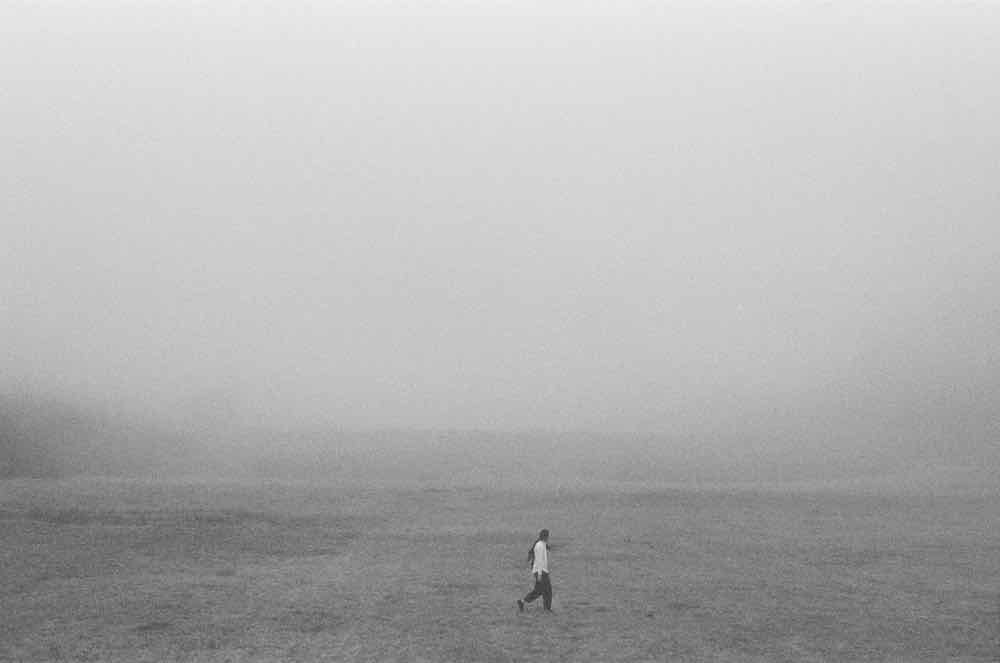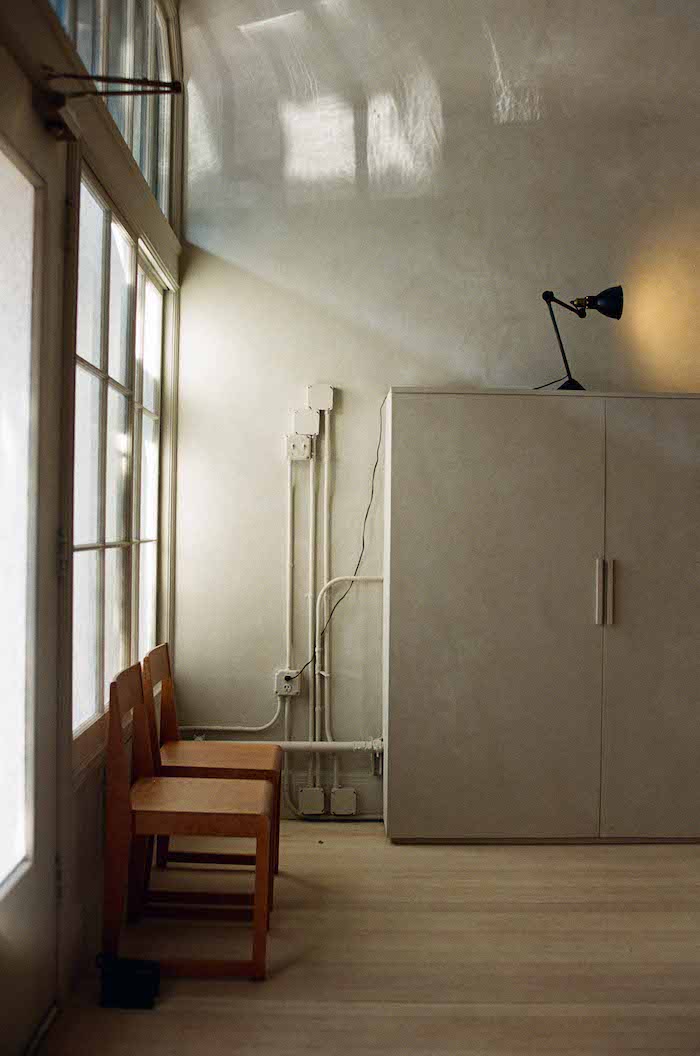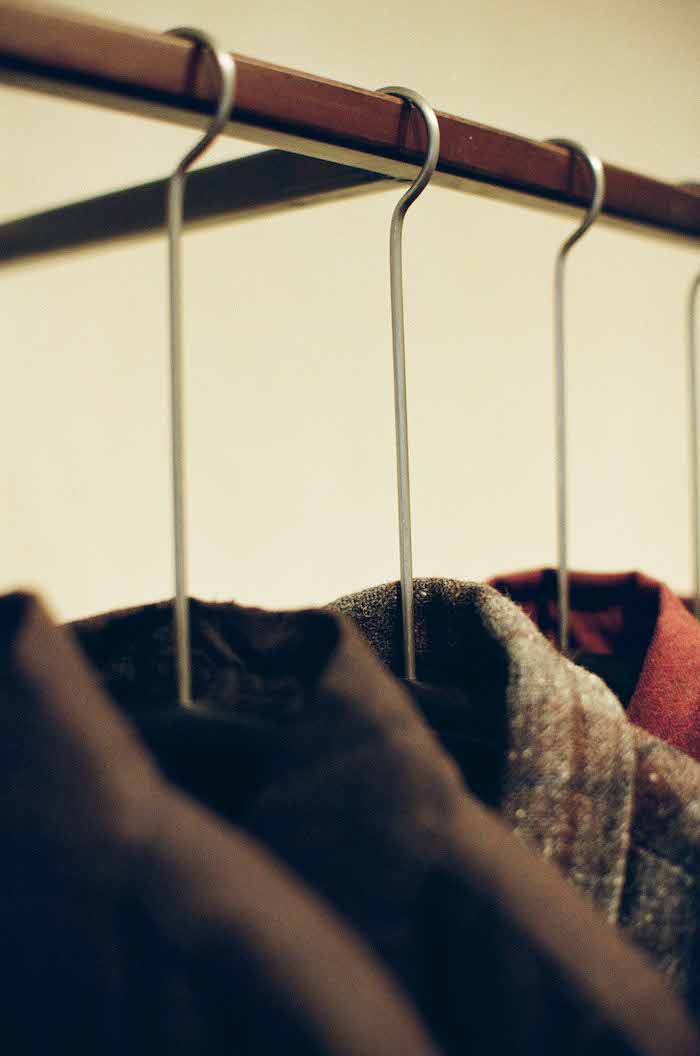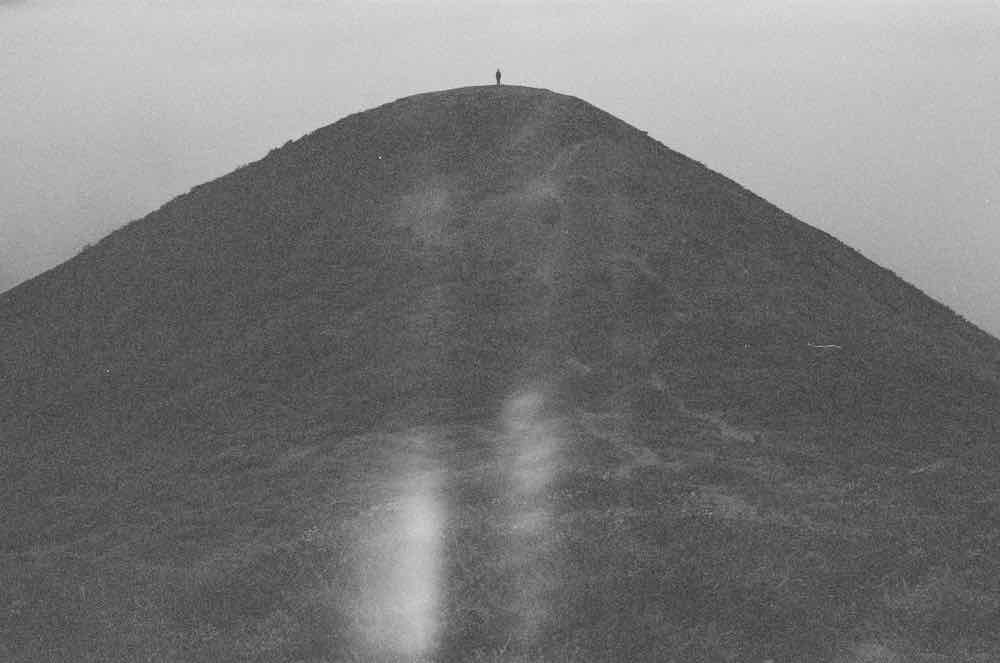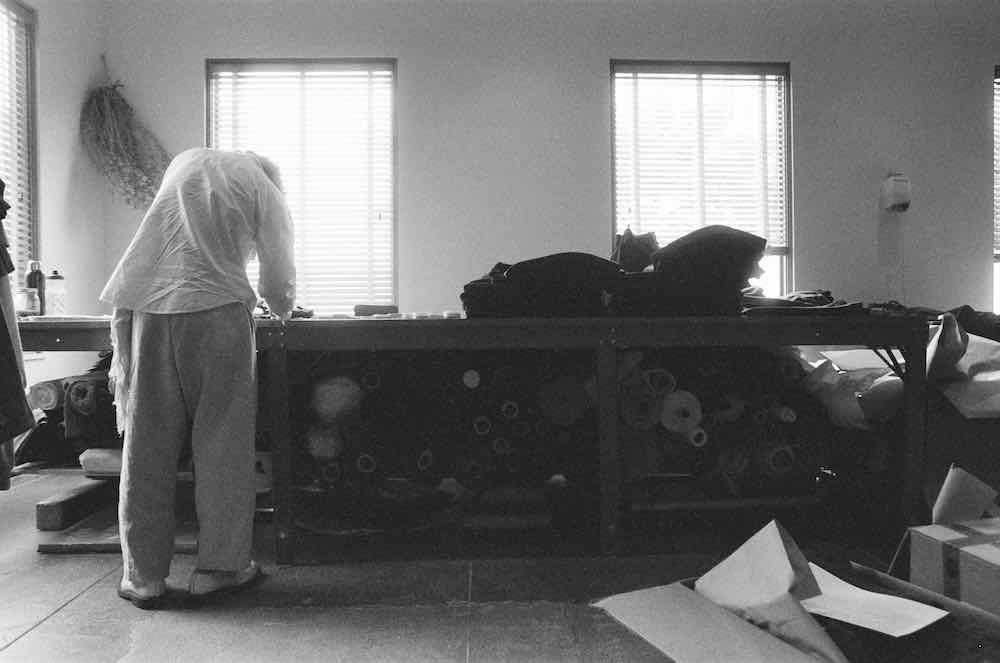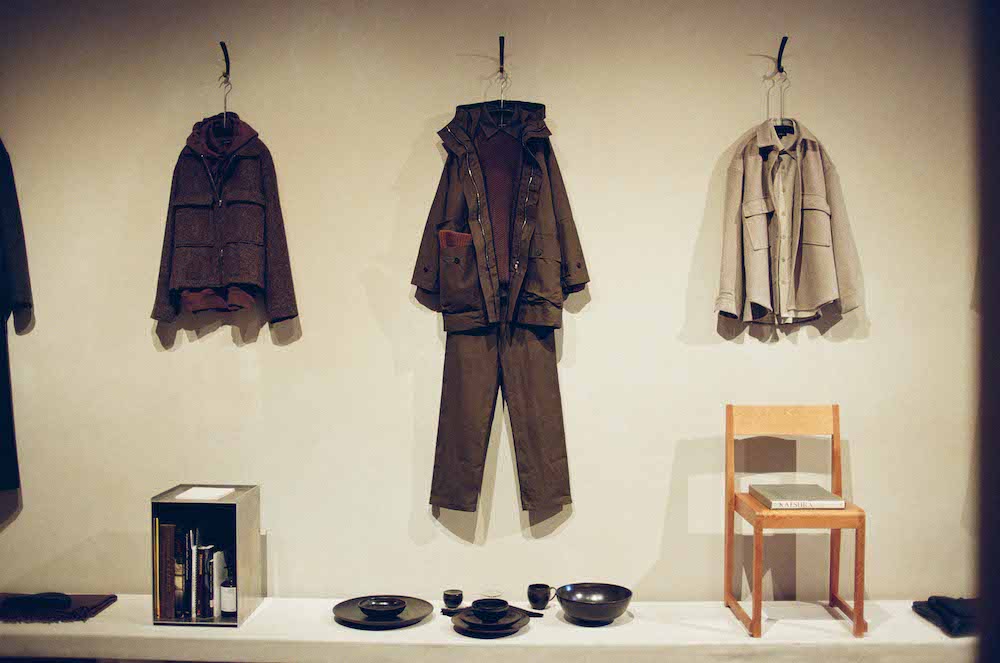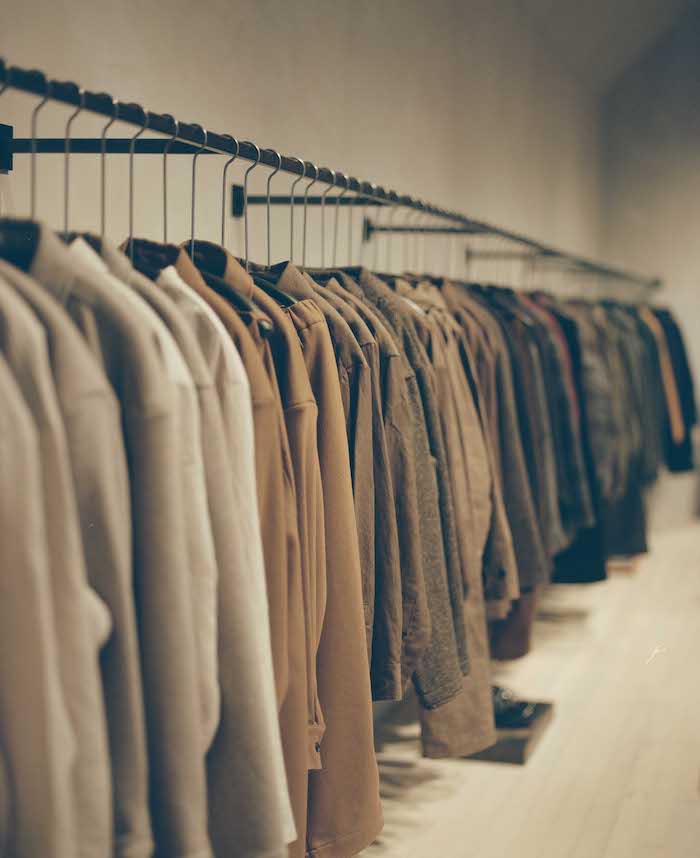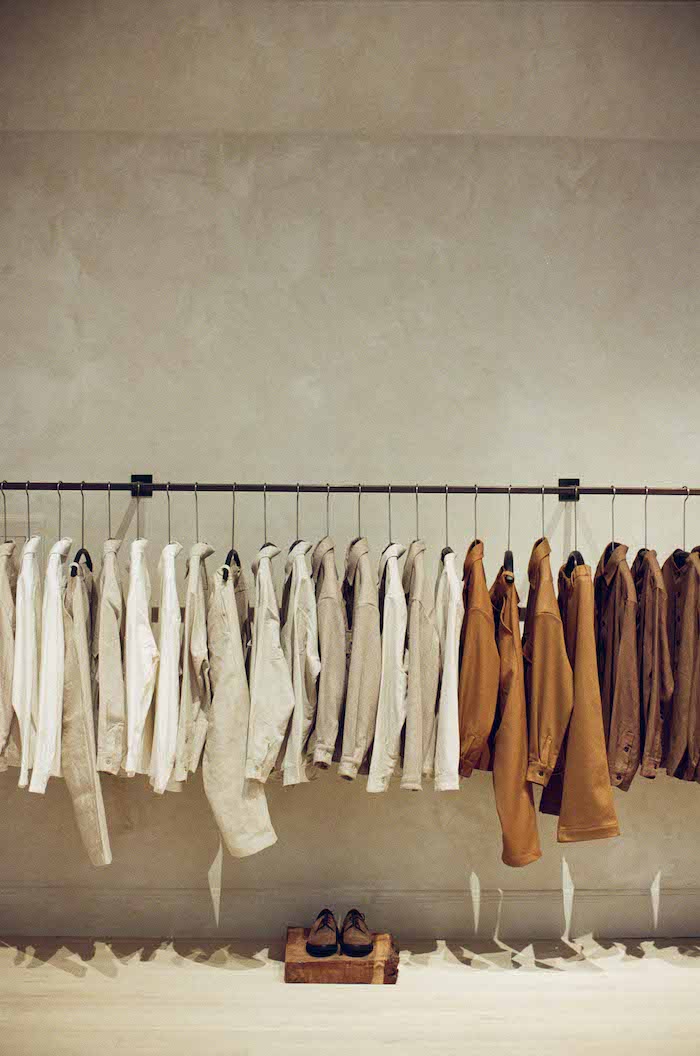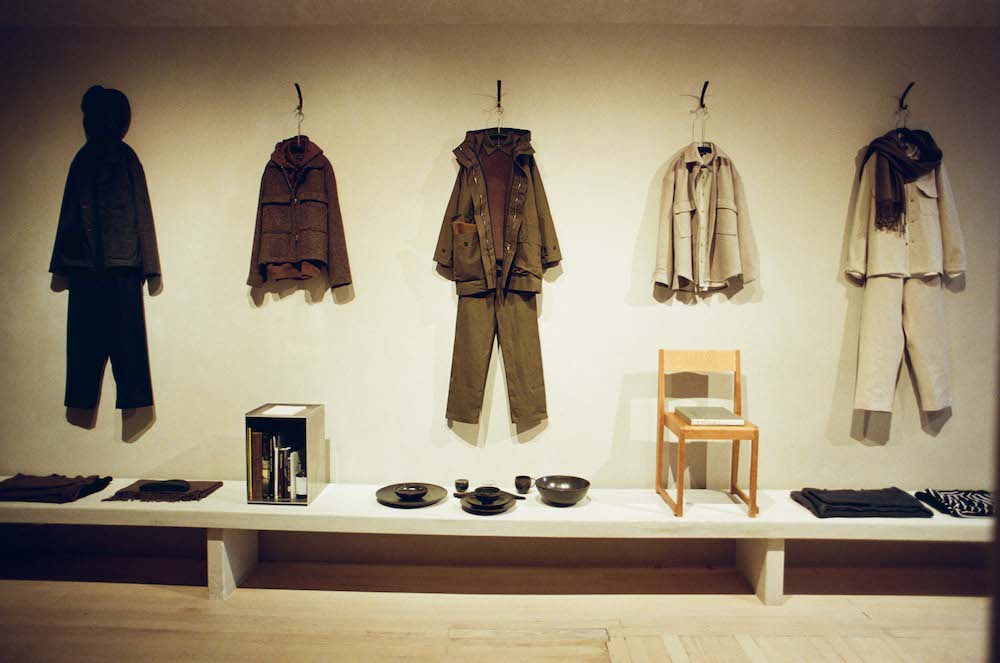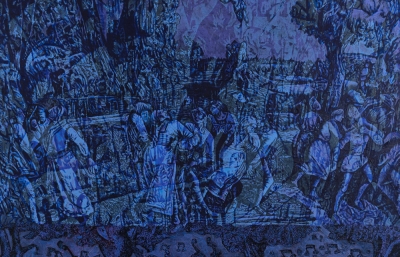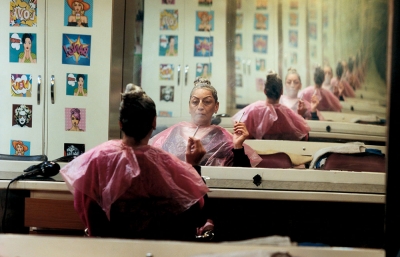Simply put, his designs are cool, calm, and collectible, beckoning the senses in almost luxuriant comfort and form. I chatted with San Francisco-based designer Evan Kinori about how he’s been inspired to tread out of bounds and still make such classic, confident clothing.
Gwynned Vitello: Your website opens with a black and white photo of tall trees, lean and leafless, muted in a cloak of fog. You give careful thought to the site.
Evan Kinori: I like that someone is confronted with an image for a brief pause before entering. They’re photos shot by myself or friend/photographer Allen Danze—usually from an hour or so north of my studio. I hope it gives a sense of place to what I make.
Skateboarding has long been part of your life. How have that passion and those friendships influenced you?
At age eleven I was told to get a skateboard by my friend Trevor Thompson. Initially, it’s so social that it's easy to put in the hours of learning—you don’t realize how much time is dedicated to being outside goofing around with friends. Before you know it, three, four years have passed, a few friends have given up but a core group emerges and you form a super-tight bond that can last a lifetime.
Your personality within that medium emerges—certain skaters that you enjoy watching, tricks you like doing, and brands that resonate. It informs who you are. You may quit skating but won’t stop noticing spots, your brain is permanently rewired. It was such a portal into a variety of music, ways of dressing, and learning about style with influences from older skaters, videos, and friends. A very potent culture at its best and fortunately still a subculture for my generation, so it wasn’t performative or vapid. Definitely no cheerleaders wearing Thrasher hoodies back then!
My biggest influence would be Matt Field. His brands Ipath and Rasa Libre hit me like a language I could speak without studying. The art direction, references, and teams—all my favorites coming together. My holy trinity was Kenny Reed, Nate Jones, and Field—a focus on style, feeling, and a specific trick selection. I was really into the shoes and it definitely sparked something in my head, appreciating differences in form, material, proportion, and function. Ipath was so successful at combining form and function in a skate company, with original design language and desire to push the boundaries of the “norm” within the skatesphere.
Today the influence is more subtle, but skating definitely pushes you to do things your own way, to develop an outsider’s identity. Stoplights and crosswalks don't apply, so the structure of society and life is up for reinterpretation—a great background for a small business owner inventing their own path constantly.
What were you studying during your time at San Francisco State University, and how did that experience guide you?
I moved to SF a few weeks after high school with college as an excuse. I had no clue what I would do at that point—most of my knowledge didn't feel applicable to careers I could imagine. I would have loved to study shoe design, but it didn't really seem possible. I studied French and Philosophy, stumbling through for a few years without momentum, then took a semester off. I was paying attention to clothing more, seeing a wide world of design out there—beyond skateboarding and beyond cheap, poorly made stuff but also beyond luxury brands and their bullshit. One day I went into an independent men’s clothing store and saw a variety of smaller brands—an assortment of well-made, thoughtful products. It opened my mind enough to realize that I was really into clothing.
I signed up for a few Intro to Fashion courses at SF Community College which were pretty goofy but gave a glimpse that sparked something. A teacher advised me to go to fashion school to study design. I did and was quickly obsessed—the first time I got good grades and would stay on campus till they locked up and kicked us out.
You’re a hands-on maker, often described as a one-man band. What was the first garment you made? Was there a Hollywood moment, you done skating and wiping off sweat with a t-shirt?
Nothing happens in a singular moment but is a result of a lifetime of influences and experiences. I’d been making clothes for about four years when I started my company with pieces that were iterations of things I’d already been making. I still iterate on them now… I was 26, so luckily didn’t think too much, just worked with friends and asked for help or advice. In 2015 my first production run was ten jackets, ten shirts, and ten pants total. The hardest thing was, and still is, production. Everyone has ideas, but actually making things with a factory is the biggest challenge and struggle.
I know you take a great deal of pride in pattern-making. Reading about Alexander McQueen, I was impressed by his skill and his intuitive ease in cutting. Why is it so important?
Patternmaking can be done with pencil and paper or digitally but I was taught with paper and that's what I enjoy. You have a silhouette in mind, and you need to draw pieces of the puzzle that come together to form a garment. You draw them at a one-to-one scale, which is really cool. If I have a way I want the pocket corner to curve, I draw it on paper, and then it’s on the garment. Wearing a hand-drawn sketch, in a way. Like architecture, you pull shapes or influences together to create something by hand. It’s what makes a pant leg fall correctly, a shirt collar lay nicely, the making of the shapes that come together to form a garment. A good pattern makes a good garment, but it’s also interpretive. Patternmakers are often the unsung heroes of the clothing world, the unnamed authors who work with a designer to create the product.
At most companies, designing means a telephone game where a designer conveys a concept to a patternmaker which then goes to a sample sewer. For a McQueen, it's all in one mind, so you have the purity of idea-to-form without miscommunication getting in the way, but allowing design to take place in every step. You may think up a design, but while patternmaking, see an opportunity to change something; also in sewing you see how things come together, and the design can be informed by the process. 
What did you have in mind in choosing the location for your first storefront?
Luck really. My previous studio building was sold and the new owners wanted the space. I had a few months to find a new workspace and stumbled upon this storefront, not intending to open a store. When I saw the unique layout and decent-sized warehouse/studio space behind it, I felt up for the challenge.
How do you feel about different fabrics, and where do you source textiles?
Textiles are so important—the same jacket design in canvas, denim, black silk, leather, or flannel will bring about different feelings and responses from a variety of people. I think natural fibers feel better and age well. A ten-year-old corduroy jacket will look amazing, while a plastic puffer might not last five years. I source fabric from Japan, Europe, and the UK mostly. A muted palette is easy to wear every day or mix together for the most use. I wear a lot of brown, but mostly classic, unfussy colors that work well together or with stuff that people already own. I like when people wear the clothes, not the other way around.
So many fashion designers create intricate, layered, multi-colored garments, but personally dress in such a minimal style. Think Halston in a black turtleneck or Armani in a navy Tee. That applies to you, right?
I always thought that was funny—designers not wearing their own stuff. But I understand they’re not always designing based on themselves. For me, it's about making what I want and can't find. I like things that are beautiful but useful and can be worn without being overly precious.
My goal is to make beautiful everyday products for people to wear for years, form memories, and eventually hand them down. I’ve always saved clothing as souvenirs of the person who wore them… my grandfather's jacket or older brother’s clothes. They’re artifacts that transport you to a place, person, or time, but can be enjoyed on a regular basis.
What inspires you in music and movies, do you like sunrise or sunset, winter or wpring? How much do you value time alone?
Big Youth, Spacemen 3, G.S. Sachdev, Eno, KMD, Windy & Carl… all kinds of stuff. I just watched a cool documentary Ocean to Sky about Sir Edmund Hillary’s trip up the Ganges river. You can savor sunset a bit longer but sunrise has such a heightened awareness. Growing up on the east coast, fall and winter really stood out to me. Alone time has an immeasurable impact on growth and balance.
evankinori.com // This interview was originally published in the Spring 2023 Quarterly

